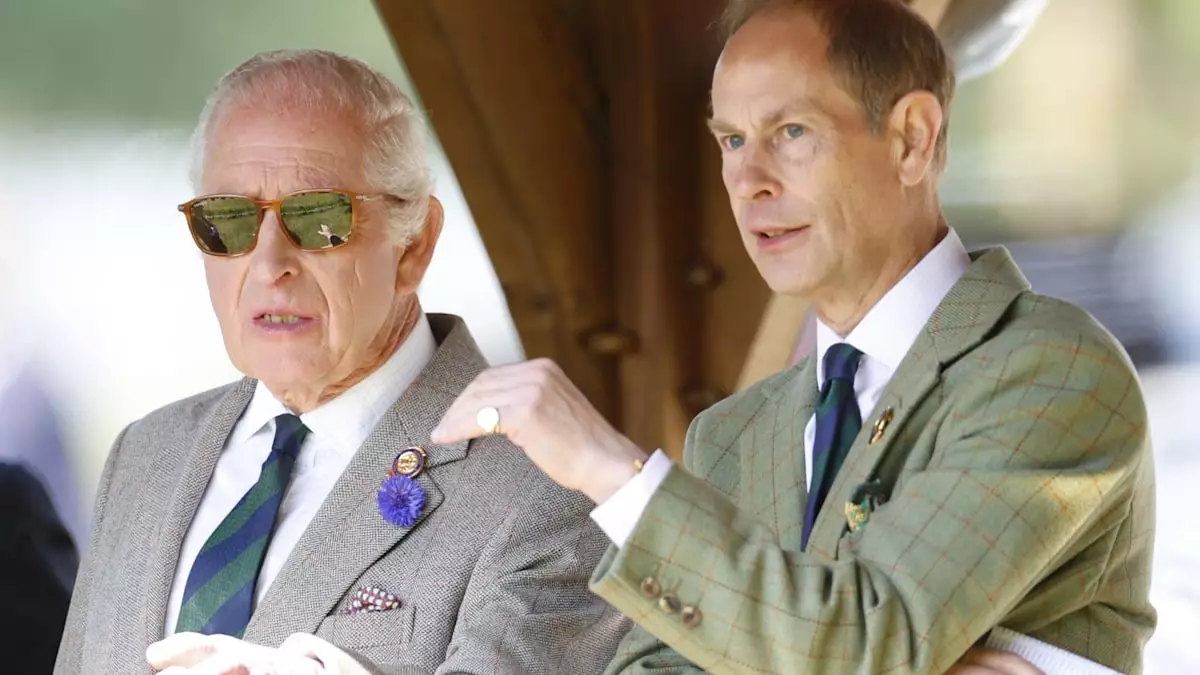In a heartwarming display of royal spirit, King Charles III made a rare public appearance at the Royal Windsor Horse Show, embracing the event that has long been a cornerstone of royal tradition. The 76-year-old monarch exuded warmth and cheerfulness, greeting well-wishers amidst applause and excitement. While his jovial demeanor uplifted the atmosphere, it also stands as a poignant reminder of the challenges he faces in light of his ongoing health battles, notably an undisclosed form of cancer. The King, donning dark sunglasses and utilizing a walking aid, seemed both at ease and determined to remain connected with his royal patronage.
This casual outing with his younger brother, Prince Edward, signifies not just a family bond but also the continuation of a legacy that the late Queen Elizabeth II deeply cherished. The Royal Windsor Horse Show, established in 1943, served as a prolific gathering point for the royal family, allowing them to engage with their equestrian roots while enjoying the camaraderie of a dedicated audience. It’s no secret that this annual event was one of Queen Elizabeth’s favorites, evidencing the continuation of family traditions even in the face of personal trials.
Legacy and Tradition Underline the Event
While King Charles may not grace each iteration of the horse show with his presence, his participation is deeply meaningful for both him and the public. The event transcends mere entertainment; it’s a tribute to heritage, lineage, and continuity. Charles was visibly relishing the occasion and celebrating a family tradition that echoes through the generations. The appearance wasn’t just for show; it was a symbol of resilience and familial support amidst a delicate chapter in his life.
Edward, impeccably dressed in country chic with a jacket and tie, engaged directly with attendees, bridging the gap between royalty and the people—a refreshing attribute that serves to humanize the monarchy. This approach is vital, especially in times when public perception can wane. Edward’s presence also underscores his commitment to equestrian sports and his keenness to represent the family tradition, which is a crucial element in fostering nobility and public goodwill.
The Importance of Family Bonds
As public figures, the royal family often embodies the fluctuating dynamics of familial support. Charles’s bond with Edward has been highlighted more distinctly in recent months, particularly in ceremonial settings that have witnessed a concerted effort to present a unified royal front. Their joint appearance at the horse show reinforced this sense of togetherness, providing a visual testament to the family’s ability to rally around one another during challenging times.
Moreover, the proximity of the event to Charles’s health issues establishes a compelling narrative about overcoming adversity. As the King balances his royal duties alongside his health treatment, these outings seem to signal a hopeful commitment to continue serving his public, despite the hurdles that might lie ahead. With a summer lineup of royal engagements on the horizon, many are keen to see how his approach to public life evolves.
The Future of Royal Engagements
Anticipation surrounds the summer season’s events, including Trooping the Colour and Royal Ascot. Speculation is rife regarding Charles’s selective attendance at these time-honored gatherings, as his health remains a priority. It’s critical that each appearance is thoughtful and purposeful, not just for the ceremonial spectacle but as a demonstration of royal resilience.
The King’s approachable demeanor at Windsor signifies a new chapter in royal appearances, where personal well-being takes precedence without compromising public duty. It reflects a modern monarchy striving to adapt in ways that resonate with contemporary society, reinforcing a royal spirit that prioritizes connection, warmth, and emotional fortitude.
In essence, King Charles’s presence at the Royal Windsor Horse Show resonated beyond the event itself; it encapsulated the spirit of a family enduring together, celebrating tradition, and redefining what it means to lead with grace amid adversity. As the royal narrative unfolds, it fosters a keen interest in how the monarchy will evolve, reinforcing the importance of empathy and resilience in leadership.

